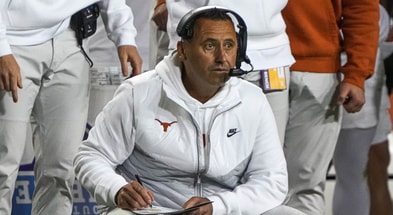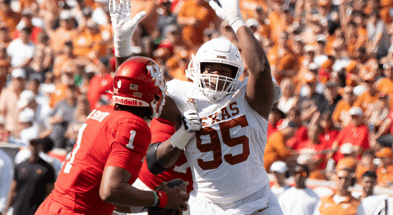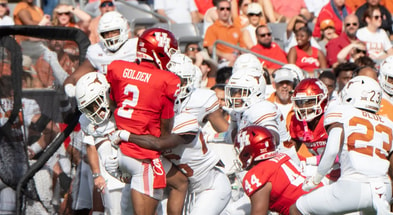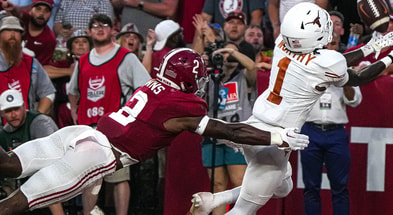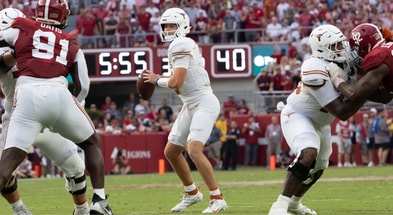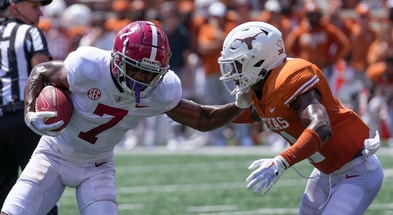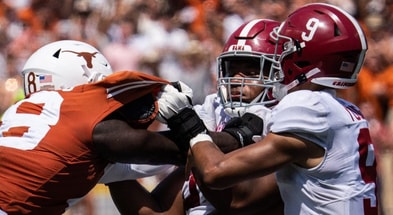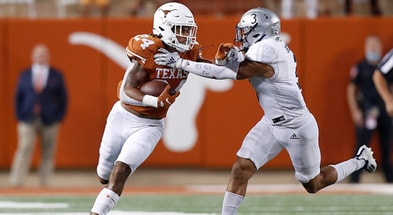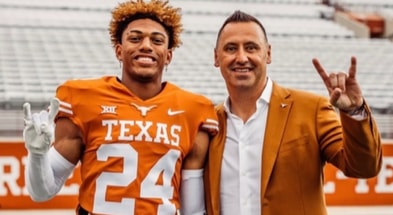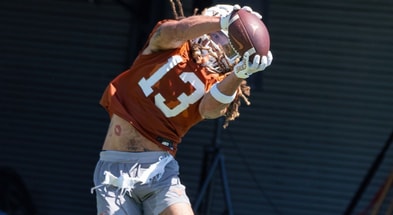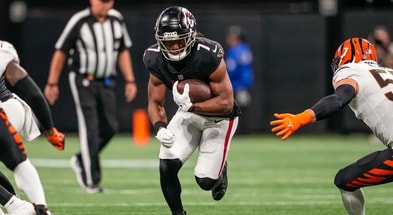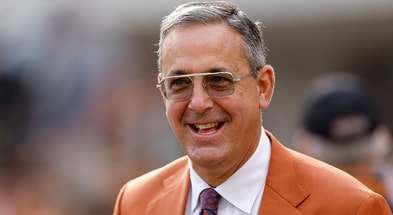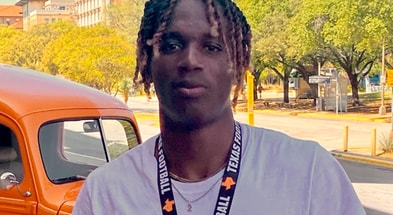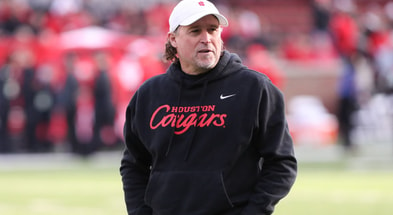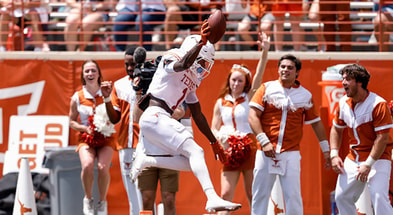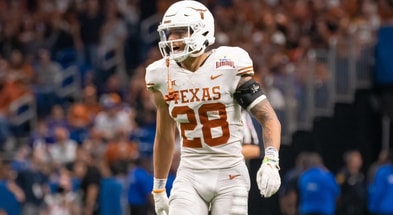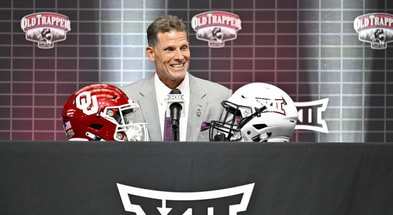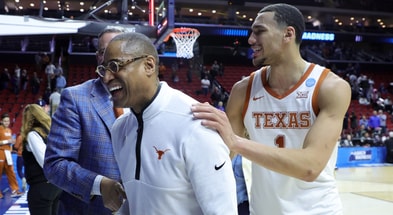"He's Too Skinny!"...And Other Useless Recruiting Observations

In 2014, a rangy young DE named Charles Omenihu – standing 6-foot-5 and weighing just under 220 pounds – impressed at the NFTC camp competing against other 2015 recruits.
The three-star recruit had wingspan, motor and was still clearly growing into his body, but he was short on physical maturity and time under tension in the weight room. Just look at his picture. He looks like a future wideout.
Three years later, the 3rd year Longhorn is competing for a starting job at DE after showing promise as a freshman and sophomore. He’s now 270 pounds with a flat stomach, a frame that can still hold weight and he still hasn’t fully touched his full athletic potential.
Omenihu has added 50 pounds of good weight in three years while seeing his overall athletic ability increase. He’s stronger, faster and has better control of his body. The only thing he probably can’t do as well any more is run a 10K. I’ve run a 10K. It’s overrated.
Here’s a snippet of what I wrote about Omenihu in high school.
Strength and size are the easiest thing to add to genetically gifted young men. It’s easier to bulk up big-framed skinny athletic guys and have them retain that athleticism than to try to make strong maxed out dudes more fluid and dexterous.
Redshirt Omenihu, let him blossom and check back in Fall, 2017.
Unfortunately, he didn’t get that redshirt, but what I wrote is true for a broad spectrum of football recruits.
In the same class, a junior high schooler named Connor Williams played TE and OT for Coppell. At “only” 255 pounds, the main concern around Williams was his size, even though he was 6-foot-5 with a big frame and an obvious growth trajectory. Despite having the best feet, athleticism and motor of any player in the state at his position – and it wasn’t even close – Connor was ranked outside of the consensus Top 50. A three-star.
I though he was wildly underrated and evaluators were missing on some really elementary stuff.
I wrote this about Williams before he arrived on campus:
Williams is all about pure athletic upside and ease. His flexibility and coordination jump off of the film. I’m not sure why people who are paid to evaluate don’t understand that big-framed athletic guys who are “undersized” (oh no! he’s only 255 as a junior in high school!) have no problem adding weight and when they do so, they generally become bigger athletic guys. This is not hard. Connor Williams will carry 295-300 pounds well and he’ll do it soon. The former TE from Coppell is on a rocket growth curve and the plateau is nowhere in sight.
Today, Williams is a 300+ pound animal, who despite not having the benefit of a redshirt, is an All-American and future high NFL draft pick. That motor still runs high, in part because it didn’t have to be created to begin with.
I picked a superstar and a player who hasn’t broken out yet (Omenihu will get his time in the sun) to illustrate a point.
That there’s nothing particularly exceptional about either player’s development. Great athletes who want to get stronger and bigger…do.
Every year, recruitniks, casual fans, pay site monkeys and even some college recruiters fail to understand that adding size and strength to a willing elite athlete is the easiest thing to do in sports.
Once again: adding size and strength to a willing elite athlete is the easiest thing to do in sports.
Now try adding wingspan, vertical leap, hand size, foot speed, power, body control, natural aggression and coordination in space. A bit more daunting.
But wait, you say, we can improve some of those things, can’t we?
Either you can’t change them at all or the things that can be influenced all get back to…you guessed it…building strength. Even when we disguise strength with some other term (balance, force production, control). Because strength underlies all athletic performance. And it’s the only aspect we can substantially influence through progressive training. That’s a useful thing to understand. Particularly if an athlete has a bunch of attributes you want and he isn’t even strong yet. THAT’S A GOOD THING. NOT A NEGATIVE.
The elements required aren’t particularly mysterious either. All one needs is lots of food, training, recovery (specifically, getting enough sleep) and a willingness to work.
Yet, every year, interested parties bemoan some 17-year old’s lack of body weight and wonder how it’s even remotely possible that a skinny 6-foot-4 guy flushed with testosterone and a growing body could somehow weigh 240+ pounds one day.
Top 10
- 1Hot
Updated SEC title game scenarios
The path to the championship game is clear
- 2
SEC refs under fire
'Incorrect call' wipes Bama TD away
- 3
'Fire Kelly' chants at LSU
Death Valley disapproval of Brian Kelly
- 4
Chipper Jones
Braves legend fiercely defends SEC
- 5
Drinkwitz warns MSU
Mizzou coach sounded off
The answer is: first, he gets to 205. Then he gets to 210. Then he gets to 215. Then 220. Guess where it goes from there?
Byron Hobbs is the latest athlete in this mold, but not the first, and certainly not the last. Hobbs was recruited to Texas because he’s aggressive, has good body control, with wingspan and coordination sufficient to dunk in a basketball game off the dribble on a half jump with enough gridiron athletic ability to house 75-yard stop routes playing wide receiver. This might be a useful set of attributes overlaid on a 240-pound athlete.
We’re worried we can’t get his squat, deadlift, press increased? The things we know can be progressed. If we can’t, fire his coach or cut him. Because someone isn’t working.
If his 40 time isn’t to your liking, consider that his is one of the genetic profiles that will drop time in the 40 as he adds weight and strength. There’s a reason sprinters take steroids. It’s not to get lighter and weaker.
And no, not all 6-foot-4 skinny guys are created the same. It’s about finding the right companion attributes and the physical markers that suggest continued athletic improvement with physical growth.
If Hobbs fails to develop physically at Texas, it’ll be because he didn’t put in the work. Or, more likely, because of pure football ability, grades, socialization issues coming from FWISD or just getting plan old beat out by better players.
Why is the genetically gifted getting bigger and stronger so hard for people to conceptualize?
It could just be pure ignorance. Nothing wrong with that.
Perhaps some folks are used to “program players” who have been lifting since 8th grade, have private trainers and already look the part. Too bad they hit their upside at age 18. They may win state, but they’re not playing here.
Perhaps it’s because so many people follow bad training regimens of their own and don’t understand the basic principles involved. Go to your local gym and see the same guys lifting the same weight looking exactly the same for years at a time.
More likely, it may be because people tend to extrapolate from their own experiences and fail to understand that – genetically speaking – you (and me) are a sack of garbage compared to an elite athlete who can vertical leap an honest 34 inches without even practicing the test, can absentmindedly windmill dunk a basketball from a stop, or a learn a new physical skill in thirty seconds that would take one of us thirty days.
Can a recruit be too skinny? Too weak? Sure. Absolutely. And when we get that guy, we’ll let you know.



